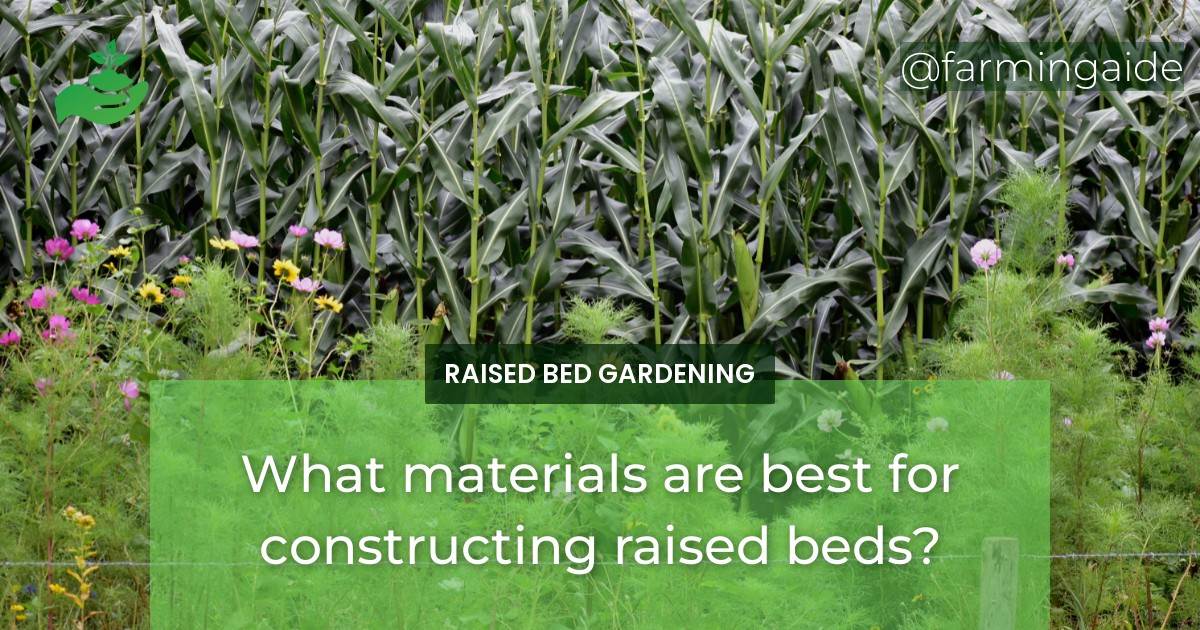When it comes to raised bed gardening, selecting the right materials for construction is crucial. The materials used can impact the durability, drainage, and overall health of your plants. There are a variety of materials available, each with their own pros and cons. In this article, we will explore the best materials for constructing raised beds.
Wood Materials
Wood is a popular choice for raised bed construction. It is readily available, easy to work with, and blends well with garden surroundings. Here are some of the most popular wood options:
Cedar
Cedar is a top choice for raised bed garden materials. It is naturally resistant to rot, insects, and decay. Cedar also contains natural oils that can repel pests and fungi. It is a bit more expensive than other wood options, but its durability and longevity make it worth the investment.
Redwood
Redwood is another popular choice for raised bed construction. It is naturally resistant to rot and insects and has a beautiful color and grain. Although it is slightly less durable than cedar, it is still a great option for raised beds.
ALSO READ
Pressure-treated lumber
Pressure-treated lumber is a budget-friendly option for raised bed construction. However, it is important to note that it is treated with chemicals, which can potentially leach into the soil and harm plants. If you choose this option, make sure to look for lumber that is labeled as safe for use in garden beds.
Hardwood
Hardwoods like oak, maple, and cherry are also suitable for raised bed construction. They are durable, attractive, and can last for many years. However, they are more expensive than softwoods like cedar and redwood.
Concrete Materials
Concrete is a popular choice for permanent raised beds. It is durable, long-lasting, and can be formed into a variety of shapes and sizes. Here are some of the most popular concrete options:
ALSO READ
Cinder blocks
Cinder blocks are an affordable and versatile option for raised bed construction. They are easy to stack and can be arranged in different configurations. However, they do not provide good drainage, so you may need to add gravel or rocks to the bottom of the bed.
Pre-cast concrete blocks
Pre-cast concrete blocks are another option for raised bed construction. They are durable and come in a variety of sizes and shapes. However, they can be heavy and difficult to work with, so you may need help lifting and placing them.
Metal Materials
Metal is a durable and long-lasting option for raised beds. It is resistant to rot, insects, and decay. Here are some of the most popular metal options:
Galvanized steel
Galvanized steel is a popular choice for raised bed construction. It is strong, durable, and rust-resistant. However, it can get hot in the sun, which can potentially harm plants.
Corrugated metal
Corrugated metal is a unique and attractive option for raised beds. It is durable and can be easily formed into different shapes and sizes. However, it can be sharp and potentially harm plants or people.
Aluminum
Aluminum is a lightweight and durable option for raised bed construction. It is resistant to rust and corrosion and can last for many years. However, it is more expensive than other metal options.
Composite Materials
Composite materials are a newer option for raised bed construction. They are made from a combination of recycled materials, such as plastic and wood fibers. Here are some of the most popular composite options:
Plastic lumber
Plastic lumber is made from recycled plastic and is a durable and long-lasting option for raised beds. It is resistant to rot, insects, and decay and does not leach chemicals into the soil. However, it can be more expensive than other options.
Recycled composite lumber
Recycled composite lumber is made from a combination of recycled plastic and wood fibers. It is a durable and eco-friendly option for raised bed construction. However, it can be more expensive than other materials.
How can I incorporate unique materials into my raised bed garden construction?
When building creative raised bed gardens, consider incorporating unique materials like reclaimed wood, old wine barrels, or even salvaged metal. These non-traditional materials can add character and visual interest to your garden while also being eco-friendly. Get creative and think outside the box for a truly one-of-a-kind raised bed design.
Conclusion
When it comes to raised bed construction, there are a variety of materials available to choose from. Each material has its own pros and cons, so it’s important to consider your specific needs and budget when making a decision. By selecting the right materials, you can ensure the longevity, durability, and health of your raised bed garden.


